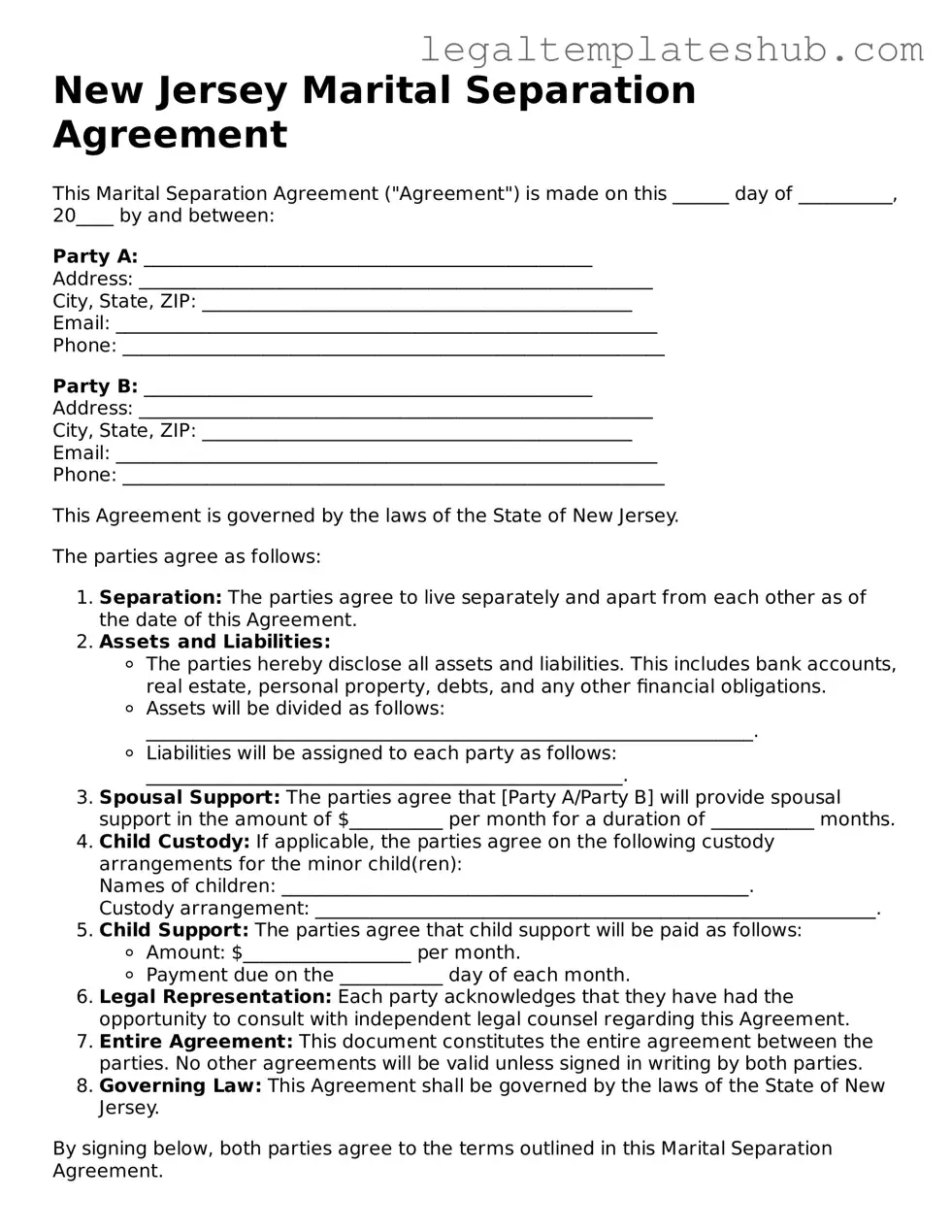Printable Marital Separation Agreement Document for New Jersey
A New Jersey Marital Separation Agreement is a legal document that outlines the terms of a couple's separation, detailing arrangements regarding property, debts, and child custody. This agreement serves as a roadmap for both parties, helping to clarify expectations and responsibilities during a time of transition. If you're considering separation, it's important to understand this form and its implications.
Ready to take the next step? Fill out the form by clicking the button below.
Access Editor
